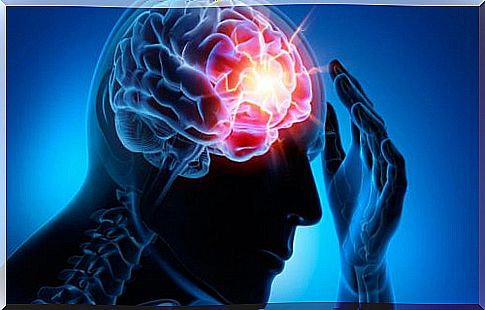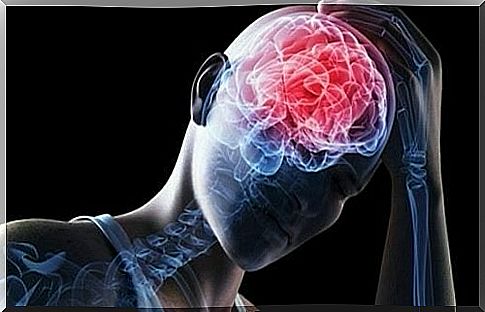The Four Most Common Cerebrovascular Diseases

Cerebrovascular disease (CVD) refers to all conditions in which the blood circulation to a particular part of the brain is temporarily or permanently stopped.
Everyone knows, either directly or indirectly, someone who has been affected by a stroke or an aneurysm.
These diseases can have permanent effects and even be fatal. At best, they are very scary and should make you take better care of your life and your habits.
Most people are
Unless you have had one of these experiences yourself or had a loved one or friend who has experienced it, then you may not understand the impact certain factors can have on your brain health – including high blood pressure, high cholesterol or obesity.
Too many deaths occur each year due to preventable cerebrovascular disease.
Others, like strokes that affect very young and healthy people, are sad realities that deviate from cause or logic.
Nevertheless, there are certain factors that you should consider with regard to these diseases and their associated indicators that may reduce their impact on your life.
It is worthwhile to dedicate your time and energy to learning about them.
The four most common cerebrovascular diseases
As we pointed out at the beginning, cerebrovascular diseases are characterized by an interruption of the blood supply to the brain.
Any change in your blood flow can lead to two types of problems: ischemic and hemorrhagic.
The ischemic variation is without a doubt the most common, and it typically has the same origin in all patients: Atherosclerosis.
We have covered the topic of atherosclerosis many times on this blog: It happens when you have very high cholesterol levels along with inflammation in the arteries of the brain.
All this leads to a slow, progressive and very debilitating disease: the buildup of plaque in your blood vessels.
This causes problems with the blood circulation in your brain, which ultimately causes cognitive problems and dementia.
This is not an insignificant problem: Prevention and good lifestyles will now really pay off in the future.

1. Cerebral thrombosis
- Thrombosis is an ischemic stroke.
- In 80% of cases, they have this origin.
- They occur when arteries in the brain narrow due to something blocking blood flow – the thrombosis.
This type of disorder usually sends out a few small warnings before the cerebral arteries close completely.
Therefore, it is important to be aware of the symptoms:
- Numbness or tingling on one side of the body
- Severe headache
- Difficulty communicating or understanding things
- Dizziness and difficulty walking
- Problems with your vision
2. Cerebral embolism

A cerebral embolism is another type of cerebrovascular disease, a condition of ischemic origin. Previously, the origin was “thrombosis”, but now it has escaped plaque. To be clearer, a thrombosis is a blood clot that forms on the wall of an important artery and prevents circulation.
In this case, an embolus is produced by a piece of plaque that detaches from an artery wall and reaches the brain.
Unlike cerebral thrombosis , plaque can get far away from the obstruction itself, typically near the heart.
The symptoms are similar to thrombosis: numbness on one side of the body, difficulty expressing oneself or communicating.
If a patient with an embolism is treated quickly, they may receive a drug called “tPA” that can dissolve the plaque. Life expectancy is significantly improved if this works.
3. Cerebral or intracerebral hemorrhage
We have already discussed the two most common ischemic brain disorders. Now we will describe the conditions that a hemorrhage can cause.
The most common is aneurysm. In these cases, there is an abnormal dilation of a weak part of a blood vessel in the brain.
- When an aneurysm rupture occurs, a cerebral hemorrhage occurs.
- Despite the effects of an aneurysm, ischemic strokes remain the most damaging and require more lives each year.
The biggest problem with an aneurysm is that it does not have many symptoms.
Some people will have a dilated blood vessel in their brain for years without noticing anything before it breaks under a certain pressure at any given time.
4. Subarachnoid hemorrhage

Subarachnoid hemorrhages often occur due to high blood pressure – something you need to keep track of.
In this case, the blood vessel also breaks and almost always lies on the surface of the brain.
The fracture is found in the space between the brain and the skull, but never enters the brain itself.
Life expectancy after this type of fracture depends on how quickly you receive medical attention. It is critical to recognize the symptoms:
- Difficulty concentrating
- Discomfort under bright light
- Irritability, mood swings, personality changes
- Neck and shoulder pain
- Vomiting and dizziness
- Cramps
The most obvious symptom concerns your vision. You may lose your sight for a few minutes, or see very bright lights or other optical phenomena.
If you have a problem or minor anomaly, it is best to trust your instincts: Call your healthcare professional immediately.









